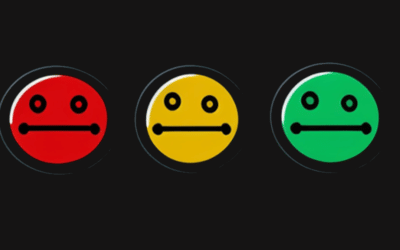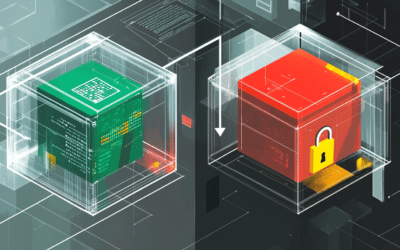Test Environments – The Tracks for Agile Release Trains
25
MAY, 2022
by Niall Crawford & Justin Reynolds.
Modified by Eric Goebelbecker.
So, you’ve decided to implement a Scaled Agile Framework (SAFe) and promote a continuous delivery pipeline by implementing “Agile Release Trains” (ART)*.
Definition: An Agile Release Train is several teams (a portfolio) responsible for the regular release of features and business benefits. All the teams share a common set of goals, a program backlog, and a roadmap. ART is central to understanding and implementing a Scaled Agile Framework.
And why not? An Agile Release Train (or Enterprise Release Management) methodology is better than the alternative chaos of different project teams running off in different directions. This approach leads to competition for shared resources, misaligned priorities, and delays due to mismanaged dependencies & relationships with other teams.
If implemented correctly, ART will help IT deliver on business transformations as quickly and safely as possible and deliver timely solutions into production and to the end customers.
All Aboard
So, we get started with each team loading up the train carriages with features & change requests. Then, we start our journey toward production.

…and the proverbial “wheels fall off”.
We often see delays in Development, System Test, Integration, UAT & Staging due to test environment:
- unreadiness
- contention
- instability due to unplanned changes
- systems don’t meet requirements
Suddenly the ART journey looks like something out of “Thomas the Tank Engine.”

The Issue
Whether real or agile, the problem with trains is they need a track. Delays and collisions are inevitable if the tracks (or the stations) are inappropriately sized, incorrectly built, mismanaged, or overfilled.
In the case of your Agile Release Trains, imagine the train stations as your lifecycle. The ART will travel through each station (Development, System Test, Integration, UAT & Staging) to allow the necessary onboarding of fixes (good commuters) & offboarding of defects (bad commuters).
If you lack robust testing capabilities, your train will face the following problems:
Environmental Contention
Environment contention can create internal conflict and impede collaboration, slowing down timelines and making it harder to reach your goals.
Lack of Visibility
IT leaders typically have limited transparency into data and configurations across test environments. The vast majority of companies have no idea what their end-to-end IT and test environments look like.
Unfortunately, this lack of visibility makes it impossible to track progress, manage workflows, and improve outcomes.
Security Vulnerabilities
IT environments often contain large volumes of sensitive data. Yet organizations tend to be lax about security privacy guidelines in test environments. This puts sensitive data at risk, leading to costly incidents, reputational damage, and other penalties.
Limited Insights
For testing environments to be effective, managers need deep visibility into testing and performance data.
Traditional testing solutions often lack comprehensive reporting components. As a result, teams have a hard time generating a complete picture of what’s taking place at any given time.

Incomplete Testing
It’s easy to miss a step during testing. When that happens, the analysis is incomplete. It drives up the time and cost of system deployments and thwarts go-to-market plans.
Maintaining the Track

In IT, preparing the track is analogous to your IT and Test Environment Management, and if your test environments aren’t ready, you’ll never get out of the station.
One easy way to assess your environment is by using the Environment Management Maturity Index Assessment (EMMi). The EMMi can help you gain a basic understanding of your testing environment.

Start by rating yourself across the following EMMi categories to see where you stand.
1. Environment Knowledge Management
How well do you understand your IT environment across all touchpoints in detail? Surprisingly, many teams don’t know as much as they should.
2. Environment Demand Awareness
Consider whether you have a grasp on demand and current usage of your IT environments. While you’re at it, think about how well your teams coordinate testing.
3. Environment Planning and Coordination
This step involves assessing configurations and deployments across all systems.
4. Service Management
Next, assess how your organization tracks incidents, changes, and releases.
5. Application Release Operations
Is your organization implementing consistent, repeatable, and traceable application releases? This step generally explores how well you’re promoting standard operating procedures.
6. Data Release and Privacy Operations
What’s more, you need to determine whether your team can ensure consistent and reliable data releases.
7. Infrastructure and Cloud Release Operation
Does your team have consistent and repeatable infrastructure and release operations? Take a moment to consider your release operating procedures and your infrastructure policies.
8. Status Accounting and Reporting
How well does your team capture and present real-time environment data? Consider your ability to visualize environment topology, usage, activities, health, operational behavior, and system team competence.
You may also want to check out this free online maturity calculator for a quick assessment.
Effective Test Environment Management Helps ART
After bad requirements management, Test Environments are the number one reason for project delays. Hardly surprising when you consider that is where projects spend most of their time.

By implementing a proper TEM framework, you ensure:
- Environments Readiness (systems prepared in advance)
- Environments Suitability (systems fit for purpose)
- Environment Stability (disruption/outage avoidance)
- Release Team Productivity (more time to Develop & Test)
- Release Streamlining (Maglev style) &
- Reduced IT Costs through better project sharing & post-release housekeeping
So next time someone mentions the ART, ask them about the readiness of the tracks. As trains don’t go too far without them.
Learn More About Test Environment
If you’d like to learn more about Release or Environment Management or perhaps just share your ideas, please contact the enov8 team. Enov8 provides a complete platform for addressing organizations’ “DevOps at Scale” requirements and providing advanced “out of the box” IT & Test Environment Management, Release Management, and Holistic Data Management capabilities.
Post Author
This post was originally written by Niall Crawford & Justin Reynolds. Modified for re-publication by Eric Goebelbecker.
Niall Crawford Niall is the Co-Founder and CIO of Enov8. He has 25 years of experience working across the IT industry from Software Engineering, Architecture, IT & Test Environment Management and Executive Leadership. Niall has worked with, and advised, many global organizations covering verticals like Banking, Defence, Telecom and Information Technology Services.
Eric Goebelbecker Eric has worked in the financial markets in New York City for 25 years, developing infrastructure for market data and financial information exchange (FIX) protocol networks. He loves to talk about what makes teams effective (or not so effective!).
Justin Reynolds Justin is a freelance writer who enjoys telling stories about how technology, science, and creativity can help workers be more productive. In his spare time, he likes seeing or playing live music, hiking, and traveling.
Innovate with Enov8, the IT Environment & Data Company.
Specializing in the Governance, Operation & Orchestration of your IT systems and data.
Delivering outcomes like
- Improved visibility of your IT Fabric,
- Streamlined Delivery of IT Projects,
- Operational Standardization,
- Security & Availability,
- DevOps / DataOps Automation,
- Real-Time insights supporting decision making & continuous optimization.
Our Key solutions include
- Environment Manager for IT & Test Environment Management.
- Release Manager for Enterprise Release Management & Implementation Planning.
Data Compliance Suite (DCS) for Test Data Management, including Data/Risk Profiling /Discovery, Automated Remediation & Compliance Validation.
Relevant Articles
RAG Status: What It Is and Using It for Project Management
Effective Leadership requires effective tooling to drive successful outcomes. One tool they can use to monitor and measure progress is RAG status. RAG stands for Red, Amber, Green, and is a simple traffic light system used to communicate the current status of a...
Enterprise Architecture Tools: 11 to Be Aware Of in 2025
Enterprise architecture (EA) is an essential discipline for organizations aiming to align their IT strategy with business goals. As companies become more complex and technology-driven, having the right set of EA tools is crucial to streamline operations, improve...
What is a Staging Server? An Essential Guide
Release issues happen. Maybe it’s a new regression you didn’t catch in QA. Sometimes it’s a failed deploy. Or, it might even be an unexpected hardware conflict. How do you catch them in advance? One popular strategy is a staging server....
What is Deployment Planning? A Detailed Guide
Deployment planning, sometimes referred to as "implementation planning," is the process of creating a plan for the successful deployment of a new software or system. It involves identifying the resources, tasks, and timeline needed to ensure that the deployment is...
The Definitive Guide to Test Data Generation
Test data generation is a critical part of the software testing lifecycle, ensuring that applications are tested against realistic scenarios before going live. If you’re not testing against production-like data, you’re arguably not truly testing your application. In...
What is a Test Data Manager? A Detailed Introduction
Testing is a critical aspect of software development, and it requires the use of appropriate test data to ensure that the software performs optimally. Test data management (TDM) is the process of creating, storing, and managing test data to ensure its...






